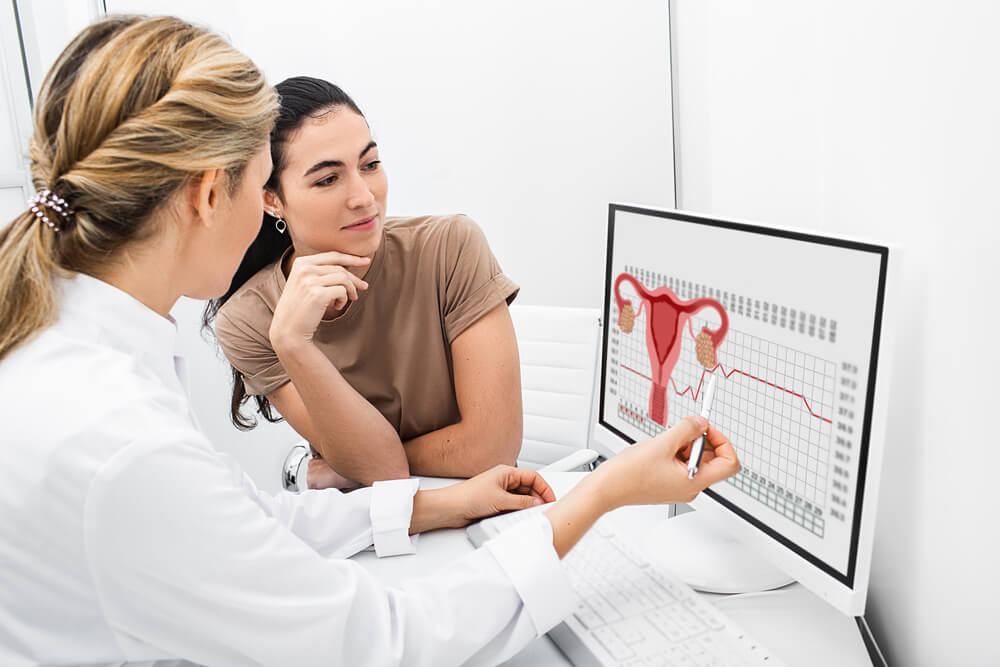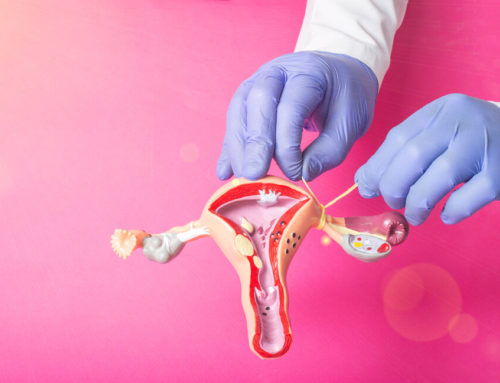Ovulation bleeding is a type of bleeding that occurs around the time of ovulation, which is when an egg is released from the ovary. Ovulation typically occurs in the middle of a woman’s menstrual cycle, which is the time between two menstrual periods.
Ovulation bleeding is sometimes called “mid-cycle bleeding,” “intermenstrual bleeding,” or “ovulatory bleeding.” It differs from a menstrual period when the uterus sheds its lining. Bleeding during ovulation is usually lighter and shorter than during a menstrual period. It can also vary in color, ranging from pink or brown to red or black. Ovulation spotting is usually not accompanied by other symptoms, such as cramping or pain.
Bleeding or spotting during ovulation is generally not a cause for concern. Still, it is vital for women to be aware of this type of bleeding and to track their menstrual cycles so that they can recognize any changes or irregularities.
In this article, we will discuss the causes, symptoms, and treatment of ovulation bleeding. For more detailed information about this or other gynecological matters, don’t hesitate to reach out to our top Gynecology Clinics in Weston and Pembroke Pines, FL.
Why Does Ovulation Spotting Happen?
Spotting during ovulation occurs when the ovary releases an egg in the middle of the menstrual cycle. During ovulation, the ovary releases a mature egg, which travels through the fallopian tube and into the uterus. Ovulation bloody discharge can occur when the egg is released from the ovary and the surrounding tissue bleeds. This kind of discharge can sometimes be seen as a small amount of spotting or light bleeding.
Ovulation spotting can also be caused by hormonal changes that occur during the menstrual cycle. Hormones such as estrogen and progesterone can affect the thickness and shedding of the uterine lining, leading to ovulation bleeding or spotting. Other factors that may contribute to ovulation spotting include stress, changes in birth control, and certain medications.

The Typical Signs and Symptoms of Ovulation
As mentioned, ovulation is the process between two menstrual periods when the ovary releases a mature egg, which travels through the fallopian tube and into the uterus. The typical signs and symptoms of ovulation include:
- Ovulation bloody discharge: This type of bleeding occurs around the time of ovulation. It is usually lighter and shorter in duration than a menstrual period.
- Ovarian pain: Some women experience pain in the lower abdomen or on one side of the lower abdomen around the time of ovulation. This is known as “mittelschmerz,” which is German for “middle pain.”
- Changes in cervical mucus: During ovulation, the cervical mucus becomes more slippery and stretchy, which can help sperm travel to the egg.
- Basal body temperature changes: A woman’s basal body temperature may increase slightly during ovulation. This can be tracked by taking the temperature orally every morning before getting out of bed.
- Changes in sex drive: Some women experience an increase in sex drive around the time of ovulation.
It is important to note that not all women experience all of these signs and symptoms of ovulation. Some women may not experience any noticeable symptoms at all. If you are trying to conceive or are interested in tracking your menstrual cycle, it is a good idea to pay attention to these signs and symptoms and to track your menstrual cycle using a calendar or app.
What Is Implantation Spotting?
Implantation spotting is a type of bleeding that occurs when a fertilized egg implants into the uterus lining. This process usually occurs about a week after ovulation. Implantation spotting is typically light and may accompany other symptoms, such as cramping or bloating. It is generally pink or brown in color and lasts for a short period of time.
Implantation spotting is not common and may only be experienced by a small percentage of women. It is not always easy to distinguish implantation spotting from other types of bleeding, such as ovulation spotting or a menstrual period. If you are trying to conceive and suspect that you may be experiencing implantation spotting, it is crucial to take a pregnancy test to confirm whether you are pregnant.
When to See a Doctor About Bleeding During Ovulation?
Spotting during ovulation is usually not a cause for concern, but there are certain situations where it is vital to see a healthcare provider. It is always a good idea to speak with a doctor if you are unsure whether you are experiencing ovulation spotting or another type of bleeding.
Pay a visit to your doctor if you experience any of the following:
- Heavy bleeding: Bleeding during ovulation is usually lighter than during a menstrual period. You should see a doctor if you experience heavy bleeding that is longer than your standard menstrual period.
- Persistent bleeding: If you experience bleeding that lasts longer than a few days or if you experience bleeding between menstrual periods regularly, see your doctor.
- Accompanying symptoms: If you experience bleeding and other symptoms, such as cramping, abdominal pain, or abnormal discharge, visit a gynecological clinic.
- Changes in bleeding patterns: If you experience any changes in your bleeding patterns, such as a sudden increase in the amount or duration of bleeding, make a doctor’s appointment.
If you are pregnant and experience bleeding, you should also see a doctor as soon as possible. Bleeding during pregnancy can be a sign of a miscarriage or other complications. It is important to note that these are general guidelines and that every situation is unique.

Can You Treat Ovulation Bleeding?
Experiencing ovulation bloody discharge is usually a normal and benign occurrence and does not usually require treatment. However, if the bleeding is heavy or accompanied by other symptoms such as abdominal pain or fever, it is important to check with a doctor to rule out any underlying conditions that may be causing the bleeding.
In general, it is a good idea to maintain good hygiene and use a panty liner or pad to absorb any bleeding. It is also essential to continue using birth control as needed to prevent unintended pregnancy. If the bleeding becomes heavy or persists for an extended period of time, make sure to speak with a healthcare provider for further evaluation and treatment.
To Conclude
Spotting during ovulation is rare and only happens to a minority of women. Although you may not get any spotting during ovulation, you can still ovulate. In order to conceive, it is important to monitor your menstrual cycle and other indicators of ovulation, such as your basal body temperature and cervical mucus changes. Your body temperature will rise after ovulation, so this method is not ideal for pinpointing your fertile window.
If you’re worried about bleeding during ovulation, wish to conceive, get appropriate birth control, or have any other gynecological health matter you’d like to discuss, go ahead and request an appointment at Advanced OBGYN Institute.






